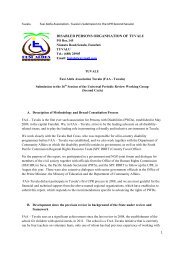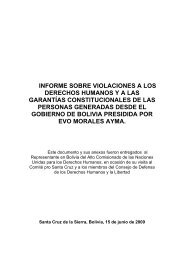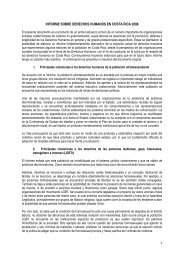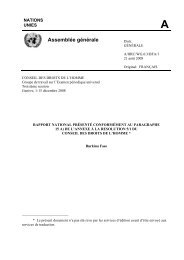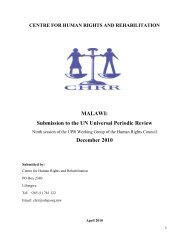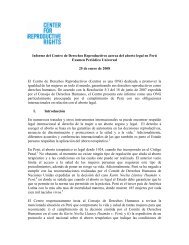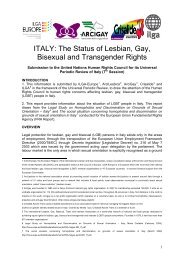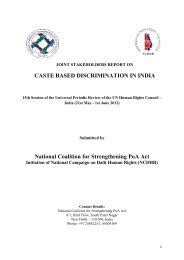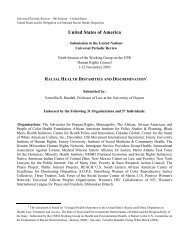Prison Needle Exchange: Lessons from a Comprehensive Review ...
Prison Needle Exchange: Lessons from a Comprehensive Review ...
Prison Needle Exchange: Lessons from a Comprehensive Review ...
Create successful ePaper yourself
Turn your PDF publications into a flip-book with our unique Google optimized e-Paper software.
changed to a peer model, which has been continued.<br />
Based upon the success of the pilot project in PC18, a second syringe exchange program<br />
was initiated in May 2002 in <strong>Prison</strong> Colony 4 (PC4) in Cricova. The program in PC4 is also<br />
peer based. A third project, in the women’s prison in Rusca, was opened in August 2003.<br />
HIV/AIDS, HCV, and IDU in Moldova<br />
Prior to 1995, fewer than 10 cases of HIV infection were reported<br />
annually in Moldova. However, the subsequent epidemic of HIV<br />
infection among people who inject drugs has driven these figures<br />
significantly higher. According to UNAIDS/WHO, by the end of<br />
2001 there were approximately 1500 adults (aged 15 to 49) in<br />
Moldova infected with HIV, the majority becoming infected via<br />
injection drug use. In a 2002 report, UNAIDS/WHO identified<br />
66.7% of AIDS cases within Moldova (73.7% of men, 57.1% of women) as being linked to<br />
injection drug use. 199 Physicians working within the country have stated that as many as 83%<br />
of all HIV infections are now linked to injection drug use. 200<br />
As of September 2002<br />
there were 210 known<br />
prisoners living with<br />
HIV/AIDS in Moldovan<br />
prisons.<br />
HIV/AIDS, HCV, and IDU in Moldovan prisons<br />
As of September 2002 there were 210 known prisoners living with HIV/AIDS in Moldovan<br />
prisons, which reflects an HIV/AIDS prevalence rate in the prison system approximately 100<br />
times higher than in the general community. 201 Twelve percent of known cases of HIV infection<br />
in Moldovan prisons are among incarcerated women. However, these statistics underrepresent<br />
the extent of HIV prevalence, since they only include prisoners whose HIV status<br />
is known. There is no universal HIV testing of the prison population, and it is assumed that<br />
the true prevalence of HIV in prisons is higher. 202<br />
Known Cases of HIV/AIDS in Moldova<br />
YEAR GENERAL POPULATION PRISON POPULATION203 1997 404 38<br />
1998 408 78<br />
1999 155 122<br />
2000 64 134<br />
2001 1300 179<br />
to September 2002 1620 210<br />
History of the response to HIV/AIDS, HCV,<br />
and IDU in Moldovan prisons<br />
The development of harm-reduction initiatives in Moldovan prisons has been led by Health<br />
Reform in <strong>Prison</strong>s, a non-governmental organization of prison doctors established in 1997<br />
by the former chief of the prison health department. Because the members of Health Reform<br />
in <strong>Prison</strong>s were themselves current or former prison physicians, the organization was in a<br />
unique position vis-à-vis the prison administration to be able to advocate for the implementation<br />
of harm-reduction measures.<br />
<strong>Review</strong> of International Evidence 37



